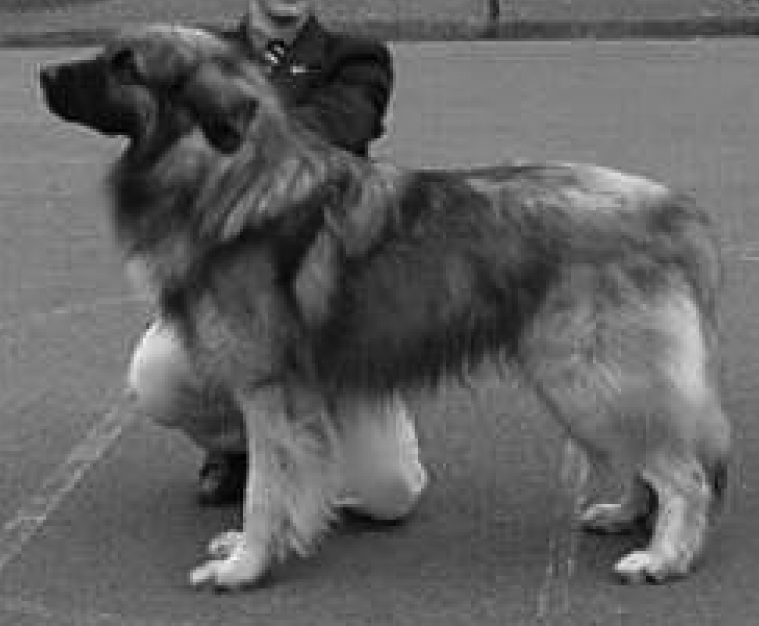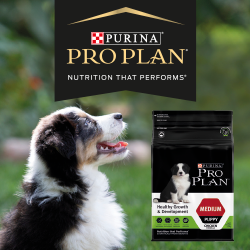Estrela Mountain Dog
General Information - Estrela Mountain Dog
Group:
Utility
Size:
Large
Lifespan:
Exercise:
Grooming:
Trainability:
Watchdog Ability:
Protection Ability:
Area of Origin:
Portugal
Date of Origin:
Other Names:
Cão da Serra da Estrela
Original Function:
A livestock guarding dog, watch dog and companion dog. Also used for draught work
History
Since remote times, this dog has developed and settled in the Estrela Mountains area, its true origin being lost in time. Nevertheless, it can be considered one of the most ancient beeds of the Iberian Peninsula. It can be found from the foot of the mountains to the summit (approximately 2000m), mainly in the summer, after the snow has melted, when the green pastures are much sought after by the herds, because the excessive heat has dried the grass on the lowlands. The progressive recognition of its aptitudes has led to its diffusion through the world since the second half of the 20th century.Temperament
Inseparable companion of the shepherd and faithful flock guardian, bravely protecting them against predators and thieves. Wonderful farm and house guard, distrustful towards strangers and typically docile to its master.Estrela Mountain Dog
A breed standard is the guideline which describes the ideal characteristics, temperament, and appearance of a breed and ensures that the breed is fit for function with soundness essential. Breeders and judges should at all times be careful to avoid obvious conditions and exaggerations, as well as being mindful of features which could be detrimental in any way to the health, welfare or soundness of this breed.
Breed Standard - Estrela Mountain Dog
 Translation: Portuguese Kennel Club. Revised by Jennifer Mulholland, Raymond Triquet and Renée Sporre-Willes.
Translation: Portuguese Kennel Club. Revised by Jennifer Mulholland, Raymond Triquet and Renée Sporre-Willes.
Origin: Portugal.
Date of Publication of the Original Valid Standard: 20.12.1966.
Utilization: A livestock guarding dog, watch dog and companion dog; also used for draught work.
FCI Classificiation: Group 2 Pinscher and Schnauzer, Molossoid breeds,
Swiss Mountain and Cattle Dogs.
Section 2.2. Molossoid breeds, Mountain type.
Swiss Mountain and Cattle Dogs.
Without working trial.
Brief Historical Summary: Since remote times, this dog has developed and settled in the Estrela Mountains area, its true origin being lost in time. Nevertheless, it can be considered one of the most ancient beeds of the Iberian Peninsula. It can be found from the foot of the mountains to the summit (approximately 2000m), mainly in the summer, after the snow has melted, when the green pastures are much sought after by the herds, because the excessive heat has dried the grass on the lowlands. The progressive recognition of its aptitudes has led to its diffusion through the world since the second half of the 20th century.
Behaviour/Temperament: Inseparable companion of the shepherd and faithful flock guardian, bravely protecting them against predators and thieves. Wonderful farm and house guard, distrustful towards strangers and typically docile to its master.
General Appearance: Large, mastiff type molossoid dog. There are two varieties of coat - long and short. Rustic, substantial with brisk gait and an impressive attitude.The breed has a lively, calm and expressive look - it is well proportioned, well made with harmonious appearance, which is traditionally how the breed has been recognised for a long time.
Head: Strong, voluminous and long and slightly convex seen in profile. Well inserted and in good proportion to the body, with the skull in proportioned to the foreface, all parts in perfect balance. Smooth skin on the skull and cheeks.
Cranial Region
Skull: Well developed, rounded, with slightly divergent longitudinal superior cranium:facial axes, convex profile, slightly developed superciliary arches with slightly apparent frontal furrow, occipital protuberance not prominent.
Stop: Only slightly marked and at approximately equal distance to the tip of the nose and the occipital protuberance.
Facial Region
Nose: Straight and in line with nose bridge - well opened nostrils, large and black.
Muzzle: Long, tapering to the tip, without being pointed. Tends to be straight, but very slightly convex at the tip.
Lips: Well developed but not thick, well overlapping, not pendulous. Mucous membrane of mouth, palate and edges of lips with intense black pigmentation.
Eyes: Medium size, tending to small, oval shaped, level set, equal in size and well open, with a keen and calm expression. Preferably dark amber in colour. Close fitting black rimmed lids. Eyebrows slightly apparent.
Ears: Set on at medium height - hanging, carried falling backwards and laterally against the side of the head, with inner edge visible (so called rose:ear), thin, triangular, rounded at the tip, small in comparison to the body.
Neck: Short, straight and thick. Well set and well connected into the shoulders, with a slight dewlap - not exaggerated.
Body:
Topline - Straight, almost level.
Back - Preferably short, well muscled.
Loins - Short, broad, well muscled, well connected to the croup.
Croup - slightly sloping - short, broad and muscled. Height at croup should be equal or slightly superior to the height at the withers.
Chest: Broad, deep, well sprung without being cylindrical. Well let down to the elbow or slightly below it.
Underline: The underline should rise gradually but smoothly from the sternum towards the groin. Belly not too wide, in proportion to the animal's substance and harmoniously connected to the body.
Tail: Set on at medium height - long, thick, carried below the horizontal, scimitar:shaped, with a hook at the end. At rest it hangs naturally between the thighs, reaching at least the hock. When excited and in motion, the tail rises above the horizontal, curving upward and forward, sideways and downward, without being carried over the croup. It should be well furnished with hair, and feathered in the long:haired variety.
Limbs
Forequarters:
General Appearance - Upright with strong bone and thick joints, moderately open angulation, with easy movement.
Forearms - Straight, parallel, long, with strong bone and almost cylindrical in shape.
ForeFeet - Proportioned, neither too round nor too long, between cat and hare feet (not splayed); thick, tight toes with abundant hair between toes and pads; dark nails, preferably black, well developed; pads thick and hard.
Hindquarters:
General Appearance - Upright, strong bone with thick joints, moderately open angles, with easy movement.
Hock - Slightly let down, moderately open, neither turned in nor out.
Metatarsus (rear pastern) - Vertical, almost cylindrical, Possible presence of single or double dewclaws.
Hind Feet - Identical to the forefeet.
Gait / Movement: Sound and easy movement.
Coat
Hair: Strong, very abundant, slightly coarse, without excessive harshness, the texture is similar to goat hair. The undercoat is composed of fine hair, short, abundant and entangled, normally lighter in colour than the outer coat.
- Long-haired variety - Straight or slightly wavy top coat, uneven in some areas. It is shorter and more dense on the limbs, below the elbows and hocks, as well as on the head. On the ears it becomes gradually shorter from the base to the tip, becoming thinner and softer. It is longer on the tail, which is bushy, thick and feathered. Hair around the neck and throat and on the buttocks and back side of the forearms is abundantly feathered.
- Short-haired variety - Short hair, evenly distributed over the body, slightly shorter on the head and limbs, without feathering.
Colour: The following colours are accepted and considered typical:
- Solid - yellow, fawn and grey in all ranges of colour intensity.
- Wolf Grey - fawn, yellow and grey tones, commonly in lighter and darker shades.
- Brindle - Fawn, yellow or grey base colour with blackish brindling. In the cranium:facial area, a dark coloured mask is typical.
- White markings are admitted only at the extremities of fore- and hind feet and on a small extension on the lower region of the neck and chest.
Faults: Any departure from the foregoing points should be considered a fault and the seriousness with which the fault should be regarded should be in exact proportion to its degree and its effect on the health and welfare of the dog.
- Appearance - General bad appearance, thinness or obesity. Height: Outside the limits set by the standard, but within 2 cm tolerance at the upper limit. Head: Narrow, long and pointed.
- Eyes - Light coloured.
- Ears - Incorrectly set, too long, thick or rounded tips. Hanging completely flat.
- Tail - Carried over the back. Absence of hook.
- Colour - Absence of dark mask.
Serious Faults:
- Behaviour - Animals showing nervous unbalance with signs of shyness.
- Nose - Pale coloured nostrils, partly unpigmented nose.
- Ears - Cropped.
- Tail - Docked or rudimentary.
- Coat - Hair somewhat different from the described type. Height: Males under 65 cm or over 75 cm. Females under 62 cm or over 71 cm.
Very Serious Faults:
- Aggressive or overly shy dogs. Any dog clearly showing physical or behavioural abnormalities shall be disqualified. Type: Atypical.
- Head - very narrow, very long and very pointed completely lacking molossoid type.
- Jaws - Under: or overshot mouth.
- Eyes - Wall eyes or different in size.
- Tail - Anurous.
- Coat - Hair completely atypical.
- Colour - Any colour not mentioned in the standard. Albinism.
Note: Male animals should have two apparently normal testicles fully descended into the scrotum. Only functionally and clinically healthy dogs, with breed typical conformation should be used for breeding.
Appendix to Standard: The following is additional information to assist in the assessment of the Estrela Mountain Dog as does not constitute part of the official standard.
Measurements and Weight of a Normal Dog
| Head | cm | in |
|---|---|---|
| Length of the skull | 13.5 to 14.5 cm | 5 ¼ to 6 in |
| Width of the skull | 12.5 to 14 cm | 4 ¾ to 5 ½ in |
| Length of the muzzle | 12 to 13 cm | 4 ¾ to 5 in |
| Body |
|
|
| Girth of chest | 75 to 80 cm | 29 ½ to 31 ½ in |
| Width of chest | 18 to 20 cm | 7 to 8 in |
| Depth of chest | 28 to 29 cm | 11 to 11 ½ in |
| Upperline |
|
|
| Length of the trunk | 63 to 65 cm | 24 ¾ to 25 ½ in |
| Width of the trunk | 12 to 15 cm | 4 ¾ to 6 in |
| Length/Height |
|
|
| Length of the body | 69 to 73 cm | 27 ¼ to 28 ¾ in |
| Length of the tail | 40 to 45 cm | 15 ¾ to 17 ¾ in |
| Height at withers | 62 to 72 cm | 24 ½ to 28 ¼ in |
| Length of foreleg | 34 to 37 cm | 13 ½ to 14 ½ in |
| Height at the rump | 67 to 69 cm | 26 ¼ to 27 ¼ in |
| Weight |
|
|
| Males | 40 to 50 kg | 88 to 110 lbs |
| Females | 30 to 40 kg | 66 to 88 lbs |
Scale of Points
|
| Males | Females |
|---|---|---|
| Head - demeanour, skull, stop, muzzle,mouth, eyes, ears | 20 | 20 |
| Neck, withers, shoulders, forequarters | 15 | 13 |
| Chest, loins, upper and lower line of the body | 15 | 15 |
| Hindquarters, rump, pelvic | 13 | 15 |
| Feet, toes, nails | 5 | 5 |
| Tail - carriage, shape, set-on | 5 | 5 |
| Coat - texture, colour, density | 7 | 7 |
| General appearance, harmony, of the whole body, gait, substance, gender characteristics | 20 | 20 |
| _____________________________________________________ | ______ | ______ |
| Sum | 100 | 100 |
DNZ No 619
FCI No 173
Copyright Dogs New Zealand
01 Oct 2014
FCI No 173
Copyright Dogs New Zealand
01 Oct 2014
Any departure from the foregoing points should be considered a fault and the seriousness with which the fault should be regarded should be in exact proportion to its degree and its effect upon the health and welfare of the dog and on the dog’s ability to perform its traditional work.



